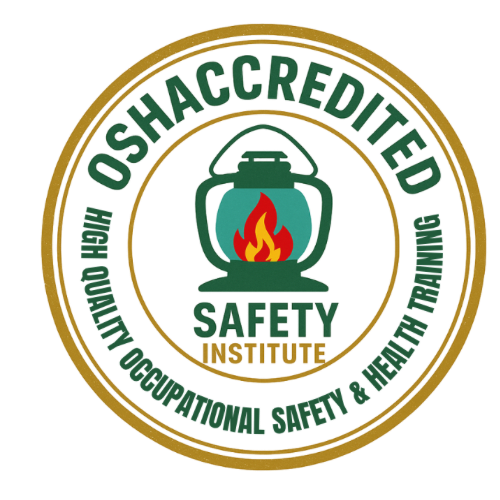Using Safety and Health Training to Raise Awareness of OSHA’s Top 10 Most Cited Standards
Using Safety and Health Training to Raise Awareness of OSHA’s Top 10 Most Cited Standards
In the workplace, safety should always be the highest priority. According to the Occupational Safety and Health Administration (OSHA), one of the primary ways to ensure worker protection and avoid costly accidents is by adhering to strict safety protocols. Unfortunately, many employers and employees fall short of meeting these standards, resulting in serious injuries, fatalities, and financial penalties. OSHA’s top 10 most cited standards serve as a critical benchmark for identifying the most common safety issues across various industries, providing insights into areas where improvements are needed.
To prevent violations of these standards, organizations can leverage safety and health training to raise awareness, improve compliance, and create safer work environments. Whether through online safety courses, OSHA training, or in-person safety workshops, education plays a key role in reducing accidents and enhancing overall workplace safety. In this blog, we will explore the significance of safety training and delve into OSHA‘s Top 10 Most Cited Standards for Fiscal Year 2023. We will discuss how comprehensive safety courses can help prevent violations of these critical standards and foster a culture of safety within organizations.

What Is OSHA’s Top Ten Most Cited Standards?
OSHA is a government agency that sets and enforces regulations aimed at ensuring safe and healthy working conditions for employees. Each year, OSHA releases a list of the most frequently cited standards from inspections conducted throughout the fiscal year. These citations represent common areas where employers have failed to meet OSHA‘s rigorous safety requirements. For employers, this list serves as an essential tool for understanding where their safety programs might need improvement.
The “Top Ten” list identifies the specific standards that were most often cited during OSHA inspections across various industries. These citations usually arise from hazardous work environments, inadequate employee safety and health training, or failure to comply with mandated safety procedures. By understanding and addressing these violations, employers can significantly reduce workplace injuries and deaths while avoiding costly fines.
Top 10 Most Frequently Cited Standards
https://www.osha.gov/top10citedstandards
OSHA Reveals Top 10 Citations List for 2023
https://www.bcsp.org/about/bcsp-news/osha-reveals-top-10-citations-list-for-2023/
The Importance of Safety Training in Preventing OSHA Violations
Safety and health training are an essential part of ensuring that workers understand the risks associated with their jobs and the correct procedures for mitigating those risks. The benefits of safety training extend beyond simply meeting regulatory requirements. Health and safety training foster a culture of safety, where employees are empowered to identify hazards, take proactive steps to mitigate risks, and report unsafe conditions. Below are some of the key benefits of safety training:
- Increased Awareness: Safety and health training helps employees become aware of potential hazards in the workplace. When workers know what to look for, they are better equipped to avoid dangerous situations and react appropriately in emergencies.
- Enhanced Compliance: By providing OSHA courses and other safety training, employers ensure that their staff is well-versed in the relevant regulations and safety procedures. This leads to better compliance with safety standards, reducing the risk of citations and fines.
- Reduced Accidents and Injuries: Health and safety training directly contributes to reducing workplace accidents and injuries. Employees who have received proper safety training are more likely to recognize hazards and take preventative measures.
- Cost Savings: Workplace accidents and injuries can be costly, both in terms of medical expenses and lost productivity. By investing in safety and health training, companies can lower their incident rates, reducing the financial burden of workers’ compensation claims and insurance premiums.
- Improved Morale: A workplace that prioritizes safety sends a strong message that employees’ well-being is valued. This boosts morale, productivity, and employee retention.
Online Safety Training: A Convenient and Effective Solution
In today’s fast-paced world, online safety courses have become a popular and convenient method for providing safety and health training. Online safety and health training offer several advantages, including flexibility, accessibility, and cost-effectiveness. Employees can take OSHA courses and other safety training sessions from anywhere at their own pace. This is especially beneficial for organizations with remote or distributed teams, as it eliminates the need for travel or in-person attendance.
Some of the benefits of online safety courses include:
- Flexibility and Convenience: Employees can complete safety training at a time that suits them, allowing for minimal disruption to their work schedules. This flexibility is especially valuable for shift workers or those with limited availability during regular working hours.
- Scalability: Online safety training is scalable, making it easy to train large numbers of employees at once. Employers can provide consistent safety and health training across multiple locations without the need for in-person sessions.
- Cost-Effective: Online safety courses eliminate the costs associated with travel, accommodations, and printed materials. As a result, online safety training is often more affordable than traditional in-person training sessions.
- Immediate Access to Information: Employees can quickly access course materials, safety resources, and assessments online. This ensures that they have up-to-date information at their fingertips.
- Tracking and Reporting: Online safety courses typically include tracking and reporting features, allowing employers to monitor employees’ progress and ensure that training is completed. This makes it easier to comply with OSHA’s training requirements.

Overview of OSHA’s Top Ten Most Cited Standards for Fiscal Year 2023
In FY 2023, OSHA’s Top Ten Most Cited Standards highlighted recurring safety issues in both general industry and construction. By addressing these citations through focused safety training and OSHA courses, employers can significantly reduce their risk of violations and improve workplace safety.
Here are the Top Ten Most Frequently Cited OSHA Standards for FY 2023:
- Fall Protection, Construction (1926.501): Fall protection consistently ranks as the number one cited violation across all industries. Construction workers, in-particular, are at high risk for falls due to the nature of their work on scaffolds, roofs, and elevated platforms. OSHA mandates the use of fall protection systems, such as guardrails, safety nets, and personal fall arrest systems, to prevent these hazards. Safety training on proper fall protection techniques and equipment is crucial to reduce the incidence of falls in construction settings.
- Hazard Communication, General Industry (1910.1200): Hazard communication is another common violation, particularly in industries that handle chemicals and hazardous materials. Employers are required to provide employees with information on the hazardous chemicals they may be exposed to, including safety data sheets (SDS) and labels. Training employees on how to recognize and safely handle hazardous substances is vital in preventing chemical-related accidents.
- Ladders, Construction (1926.1053): Improper use of ladders is a leading cause of injury in construction. OSHA standards require that ladders be properly maintained, inspected, and used according to safety protocols. Providing training on ladder safety and proper usage can help prevent falls and related injuries.
- Scaffolding, Construction (1926.451): Scaffolding-related violations are another common issue in construction. Scaffolds must be designed, erected, and maintained according to strict safety standards to ensure stability and worker protection. OSHA requires scaffolding inspections and training on proper assembly and disassembly.
- Powered Industrial Trucks, General Industry (1910.178): Powered industrial trucks (forklifts) are often involved in accidents due to improper operation or inadequate maintenance. OSHA requires operators to undergo safety training and certification to ensure they are qualified to safely operate these vehicles.
- Control of Hazardous Energy (Lockout/Tagout), General Industry (1910.147): The lockout/tagout standard is crucial for preventing injuries related to the unexpected release of hazardous energy during maintenance or repair work. Safety training on lockout/tagout procedures ensures that workers know how to safely control and isolate energy sources to prevent accidents.
- Respiratory Protection, General Industry (1910.134): Respiratory protection is necessary when employees are exposed to harmful airborne contaminants. OSHA requires employers to implement a respiratory protection program, including safety and health training on proper use, maintenance, and fit testing of respirators.
- Fall Protection Training, Construction (1926.503): In addition to the use of fall protection equipment, OSHA mandates that construction workers receive safety and health training on fall protection systems. This includes recognizing fall hazards, selecting appropriate fall protection methods, and using equipment correctly.
- Eye and Face Protection, Construction (1926.102): Eye and face protection is essential for preventing injuries caused by flying debris, chemical splashes, and other hazards. OSHA requires employers to provide appropriate eye and face protection and ensure that workers are trained on its use.
- Machinery and Machine Guarding, General Industry (1910.212): Machinery-related accidents, such as entanglement or being struck by moving parts, are common in many industries. OSHA requires that machines be properly guarded to prevent access to dangerous moving parts. Employers must train employees on machine safety procedures and the importance of using guards and other safety features.
Conclusion: The Role of Safety Training in Reducing OSHA Violations
In conclusion, safety training is an invaluable tool for raising awareness of OSHA‘s most frequently cited standards and improving compliance with workplace safety regulations. By investing in comprehensive safety training programs, including online safety courses, OSHA training, and in-person workshops, employers can significantly reduce the risk of violations, enhance employee safety, and foster a positive safety culture.
Safety training on OSHA‘s Top Ten Most Cited Standards—such as fall protection, ladder safety, and machine guarding—plays a critical role in preventing accidents, injuries, and fatalities. Organizations that prioritize safety and health training not only protect their workers but also avoid costly fines and legal issues. By integrating safety courses into daily operations, employers create a safer work environment, ensuring that both employees and businesses thrive in a culture of safety and compliance.
As industries continue to evolve, ongoing safety education remains essential in maintaining compliance and preventing workplace injuries. Leveraging online safety training and OSHA courses allows businesses to meet safety requirements while empowering employees to take ownership of their health and safety. Investing in safety training today can lead to a safer and more productive workplace in the future.
Author: Dr. O’Neil G. Blake, Chief Executive Officer (CEO) of OSHAccredited Safety Institute
MS., MBA., MSc., BSc, CSP., ASP., CSHM., CSMP., MRSA.
Date: 01-05-2025











